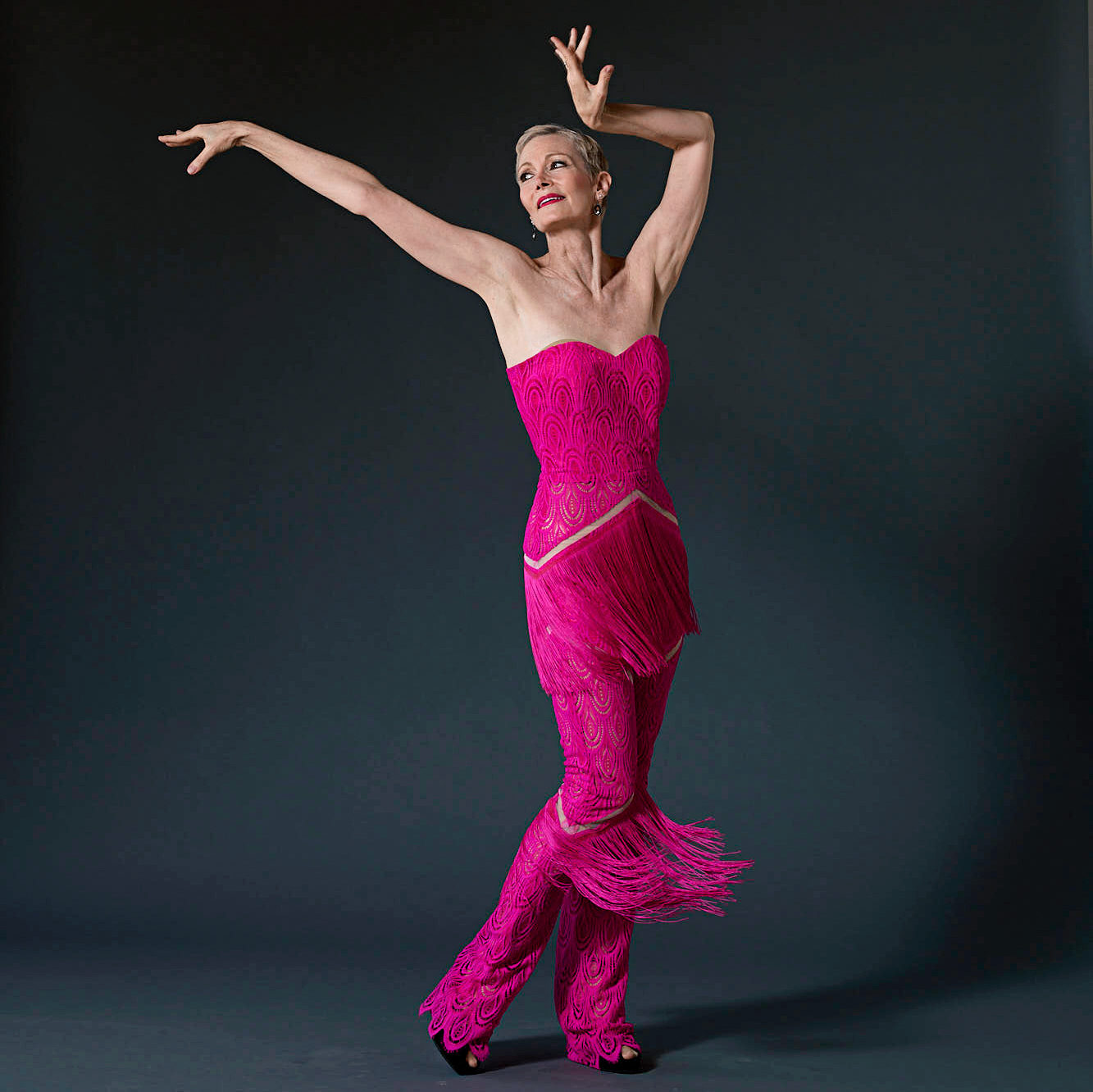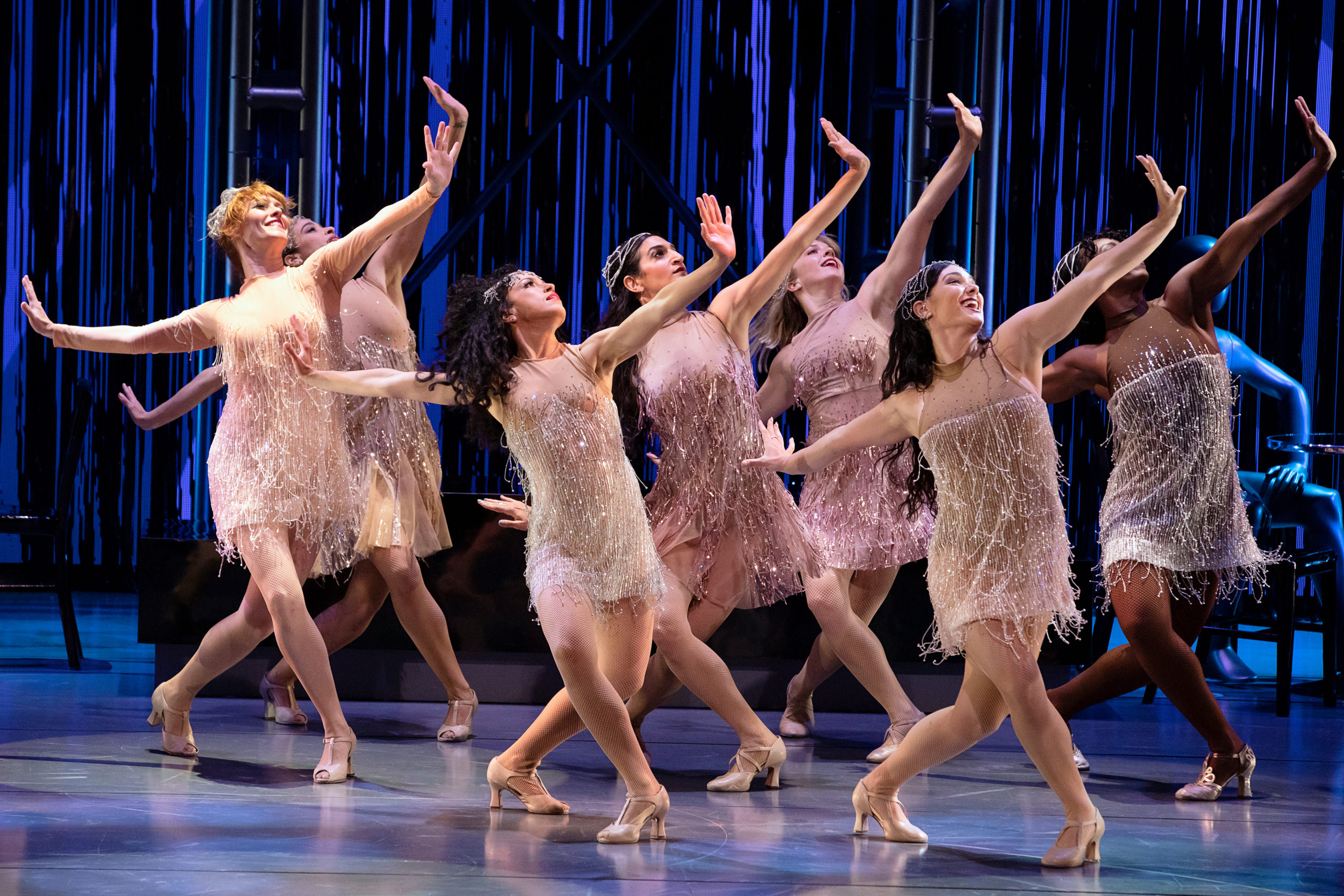Christine Colby Jacques and Wayne Cilento on Bringing Back Bob Fosse’s Dancin’
What would Bob Fosse do?
The question might arise for any choreographer or director trying to figure out what comes next at a critical juncture in a new musical. But for Christine Colby Jacques and Wayne Cilento, the first question was, what did Fosse do? And only then did they wonder how the Tony-Oscar-Emmy–winning director/choreographer of Sweet Charity, Pippin and the film of Cabaret would tackle their current project: the Broadway-bound revival of Dancin’, the mostly plotless potpourri of freestanding, unconnected Fosse numbers that they’d both been in back in 1978.
Having spent months painstakingly working to retrieve those numbers, Colby Jacques still has a warning for audiences who saw the original: “You’re not gonna time-travel and relive your memories.” The “Fosseness” is intact, she says, but in directing the show, Cilento, 72, has changed it without changing any steps. For instance, one section of a number was combined with others, there were some positioning changes, and numbers that felt dated were given fresh settings. When Bob Fosse’s Dancin’ tried out this past spring at the Old Globe in San Diego, artistic director Barry Edelstein described it in the program as “Broadway 1978 in direct conversation with Broadway 2022.”
For Broadway ’78, Fosse selected music that he loved, from Bach to Neil Diamond, and choreographed in a variety of styles—ballet, soft-shoe, Broadway jazz. This was one of the reasons Cilento, who earned a Tony nomination for his performance, wanted to revive the musical. He thinks the long-running success of Chicago has frozen the public’s sense of who Fosse was and what he did. “Yes, it’s part of his personality and his vocabulary. But he loved ballet. He loved technical dancers. He was explosive,” says Cilento. With Dancin’, Fosse was freed from the constraints of a single period and a single composer, allowing him “to do anything he wanted to do stylistically.”
Colby Jacques doesn’t like some of the words—like “reproduction” or “re-creation”—used for what she was tasked with. “You can’t re-create something that’s already been created,” she says. Now in her late 60s, she started working on the revival in June of 2021, teaching full numbers and some main sections to a few dancers so Cilento could see what there was. Then the show was cast, and by fall Colby Jacques, along with Cilento’s associate, Corinne McFadden Herrera, and his assistant, Lauren Cannon, were working with the full company in New York City, re-whatevering every detail of the dances she had learned more than four decades before.

She’d been in New York just a few years, working as a nightclub dancer, as a Rockette and with Luigi, but Colby Jacques says she was still “so green” when Fosse hired her. “Dancin’ was my first Broadway show, it was Fosse, I was with all these Broadway veterans—my brain was watching and listening and just taking it all in,” she says. And adjusting her body to his style took “a ton of work on my own.” Still, Colby Jacques wasn’t ready for what happened in the rehearsal room when the stage dimensions were taped to the floor: Fosse realized he had too many dancers, and asked her to be a swing. “I said no four times,” she recalls, before deciding to stay—and recognizing the pluses. “I got to be in the room for all the numbers, and hear what he was telling everyone.” She eventually went into the show as a replacement, but her time as a swing, and her later experiences, like teaching for the Verdon Fosse Legacy and at the University of Kansas, made her ideal for her involvement in the revival, credited at the Old Globe as “Reproduction of Mr. Fosse’s choreography.”
She accomplished this with a mixture of memory, notes and research. The Broadway original was never videotaped—the only record of Dancin’ comes from a later Japanese production. So Colby Jacques mined her memory, talked to old castmates, dug up additional snippets of video—from a touring company, a television appearance, a benefit. Not all of it was helpful: “The footage would differ—one company did something a little different, or you couldn’t see a certain section, or the tape was so blurry you couldn’t really see what they were doing.” Mostly she was working with what she and the others remembered.
When they got to “Joint Endeavors,” a series of marijuana-scented romantic duets, she was stumped, and so was everyone else. “Some people remembered maybe a count of eight, or a particular lift. I remembered two lifts, but I couldn’t quite remember how I got into them or out of them.” As she phoned other alumni to gather more pieces of the puzzle, she sometimes found it impossible to picture what they were describing. But other times, she says, the descriptions “would just click in my head.” And sometimes doing a fragment of a phrase triggered the next movement, which triggered the next, until she’d somehow danced through an entire sequence, and “there it was, lingering in some recess of my brain. All it needed was that one little movement,” she says.
Beyond summoning Fosse’s steps lay another hurdle. “It’s hard for a dancer who was directed by him to pass it on, because we can’t explain it the way he explained it,” she says. “He was a master manipulator, who had access to the part of your brain needed to get what he wanted into the step or the character.” And getting across the nuances is hard, too. “As a dancer,” she notes, “you’re taught to get out there, smile and really dance it. No. Not always. Sometimes less is really more—a soft, subtle indication, not a full movement.” She recalls a frequent Fosse refrain: “ ‘Don’t try to make the audience love you, don’t try to get applause.’ You don’t try to get a laugh, because that’s a surefire way not to get it. Part of his genius was what to put in, and also what to take out.” Performing Fosse’s choreography, she says, “looks like a completely physical activity, but it’s actually a lot mental.”
So in the end, there was a third question for Cilento, Colby Jacques and the rest of the team: What would Fosse not do? One thing they all agreed on was that Fosse wouldn’t be repeating the show exactly as it had been done in 1978. “He liked to change things,” Colby Jacques notes. And Cilento remembers being “blown away” when he worked with Fosse eight years after doing Dancin’, on Broadway’s Big Deal. “It was a different Bob. There was a completely different way of approaching a show—there was a seamlessness, like he was making a movie.” Cilento endeavored to keep that fluidity and make this Dancin’ feel like a film Fosse would make today, for a 21st-century audience. It’s a dilemma for anyone reviving any show that spoke to its own time, and Cilento’s solution was to give Fosse’s old numbers a new context. In 1978, couples dancing to the swing classic “Sing, Sing, Sing” faced the audience. Now, Cilento turns them so they face each other—the steps haven’t changed, he says, but the feeling has.






